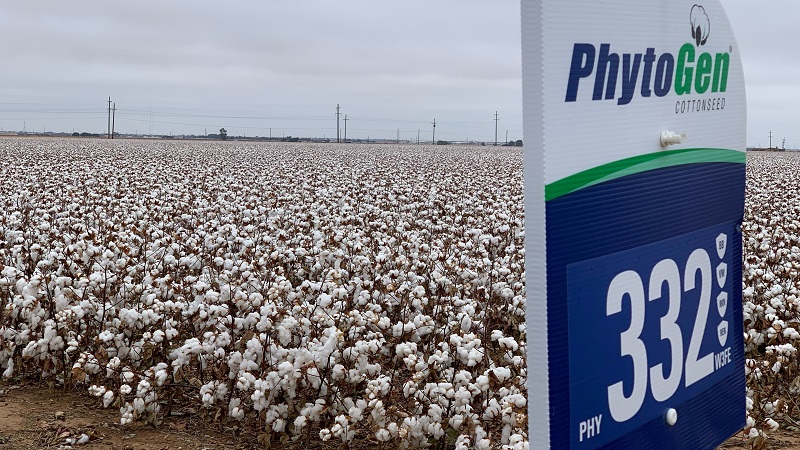Crop Scan AgReport (April 5): Getting Ready for a Busy Planting Season
Cotton Grower® magazine’s Crop Scan AgReport returns for 2021, with cropping plans pretty much in place and a few seeds already in the ground. Our team of highly respected cotton consultants from across the Cotton Belt will offer their insight and recommendations twice monthly to provide a field level look based on what they’re seeing and hearing in their areas. Thanks to NexGen brand cottonseed for sponsoring the report again this year.
Mark Nemec is a Texas independent agricultural consultant, now in his 27th year of checking cotton, wheat, grain sorghum and corn in the Blacklands and Brazos River Bottom area of Central Texas.
Well, it’s finally here…the 2021 cotton planting season is upon us. Planters are starting to roll in Central Texas. Acres are going to be down slightly in our area due to the higher prices for all of our grain crops. The growers planting cotton are happy about the somewhat higher price for their crop.
We currently have decent moisture for our crop to start, but high winds and low humidity are drying out the top couple of inches. We are having to plant a little deeper than usual to get into good seed bed. The concern most of us here have is that we are about five inches below on rainfall now from where we normally would be this time of year – and not much is in the extended forecast.
Our burn-down programs worked very well this year, as most fields are clean. We have been treating the few places we didn’t get to earlier and putting down residues behind the planter as we go.
After our crop gets going, growers will need to be watching out for early season pests like thrips and aphids. With the warm start here, cotton should grow off fast and will need to be monitored for fleahoppers to ensure a good early fruit set. If we do start getting some rainy weather, PGRs will need to be applied, and some of the newer varieties will need to be managed against excessive growth.
A lot if this is old news, but a good reminder never hurts.
Tucker Miller is a Mississippi-based independent private consultant for cotton, soybeans, corn, peanuts, rice and vegetables. He is a member and past president of the Mississippi Agricultural Consultants Association.
After visiting with all my growers, I get the feeling of optimism in the air. Prices have been better in all the crops that we grow.
Our cotton acres should be about like last year, with maybe a slight increase. We have had our budget meetings and laid out an outline of what we may expect with regard to insects, weeds and diseases. We had a very cold winter and hope for some help in reducing some insect populations. A good deal of field work was done last fall, and we are in good shape as we approach planting time.
In my area, we will be transitioning to the Bollgard III varieties. We have found several that will yield as good as or better than our Bollgard II standards.
We did a lot of fall burndown which really helped with our resistant ryegrass problem. There were more cover crops planted in our area than ever before. These have been sprayed and are burning down nicely. Weather permitting, we will start planting cotton the last week of April and first week of May.
Kerry Siders is Texas A&M AgriLife Extension Agent-IPM for Hockley, Cochran and Lamb Counties, providing education and applied research for weeds, insects, diseases, nematodes, growth regulators and harvest aids in cotton. He is a member of the High Plains Association of Crop Consultants.
Cotton producers here on the Plains of Texas have most everything ready to go, or at least those things in their control. Plans A, B and possibly C are ready to implement as conditions change.
One item which most are good about – but sometimes need a gentle reminder of – is making sure they have a crop consultant lined up. When times are tough, there is no better investment than having a crop consultant on the payroll. A good consultant checking insect pests can pay for themselves in one trip through a field by either finding or not finding a problem. A well-timed growth regulator or adjustment in fertility, irrigation and weed control is invaluable, as well. If a producer here on the Texas High Plains needs help with this, I would refer them to the High Plains Association of Crop Consultants. Contact me for more information.
Another item I would like to mention. We often rely on established weather stations for soil temperatures when watching for “go time”. Well, nothing wrong with weather stations, but know their limitations. For one thing, permanent weather stations are placed in a non-tilled, pasture-like situation. Usually there is native grass in the immediate area, and then it could also be surrounded by other plants like small brush – basically, a much different environment than what we have in-field.
If you are one of those producers trying to grow extra-long staple (ELS)/Pima cotton here on the Texas High Plains, you are going to be watching that soil temperature like a hawk over the next few weeks, as you must get planted before the end of April.
My suggestion is always to put out your own thermometers. I would mark a spot and place a thermometer at 2-, 4- and 6-inch depths. Normally, our upland planting allows us the luxury of waiting until we hit a consistent 65 degrees in May. You are not going to have that in April. I would target 60-degree average for seven days at that 4- to 6-inch depth average, with a range no less than 55 degrees. Right now, we are at 58 degrees with a range of 52 to 63 degrees.
Be safe and Godspeed!
Wes Briggs is an independent consultant providing recommendations on weed, disease, insect and fertility management, plus variable rate soil sampling, for growers in Georgia, Alabama and Florida for more than 30 years. He and his scouting team cover about 10 counties in the tristate area, checking cotton, corn, peanuts, soybeans and some small grains.
I think my area of southwest Georgia is probably going to be down 5% to 7% on cotton acres, but I am hearing the rest of Georgia is going to be about the same acreage as last season.
There are several reasons our acres are down here. In 2017, we had Hurricane Irma. In 2018, we had Hurricane Michael which took out all our cotton. In 2019, we had a so-so year with lots of whitefly problems. Then in 2020, we had Hurricane Sally and it was very wet in general. We had the sixteenth wettest fall in 129 years and the fifth wettest September in 129 years. We lost a tremendous amount of cotton to that moisture last year. We have good corn prices, and with our irrigation here, we can grow a good corn crop. We’ve been able to get the corn out before the bad fall weather, so I think we are going to lose some cotton acres to that.
Right now, we are in good shape from a moisture standpoint. We have missed some of the bigger rains that went north of us, so they are really wet up there. We should have good moisture to get herbicides activated. We won’t have any cotton planted before April 12. Generally, we get started around April 15. We try to cut planting off here around June 20. We can still make some pretty good cotton if we get planted by then with the varieties we have available now. That’s barring more crazy weather in the fall. We are having to watch whiteflies more closely now. The later you plant, the better chances you run into having some problems with them. But we’ve had good cold weather this winter, so hopefully the whiteflies got knocked back some for the coming season.
Chad Harrell owns and operates Harrell Agronomic Services in Northeastern North Carolina. He is a member of the North Carolina Agricultural Consultants Association and serves on the board of the North Carolina Cotton Producers Association.
I believe that cotton acres will be flat this year due to strong competition from other commodities and increased input costs. For some growers that didn’t get their planned acres planted last year due to the cool wet spring, acres may be slightly up.
We have had a wet spring here in North Carolina, but we are finally drying out. We have been able to get in the field the last couple of weeks, and most growers are now wrapping up burndown and lime applications. I believe we will see some corn going in the ground this week. The earliest we start planting cotton is the last week of April – typically the first week of May to last week of May. We have had success planting the first week of June.
Cotton prices have improved this year, but I do not see growers increasing their inputs to replenish areas dialed back from previous years. Input costs, especially fertilizer prices, have increased dramatically this year. We will most likely stick to the program that we’ve had for the past few years.
For weed control, we usually stick to a 2- or 3-way pre-emerge program that typically includes a combination of Reflex, Direx and/or Warrant, followed by a post application of Warrant. Liberty and dicamba are used as needed. I do not foresee any new weed problems this year.















